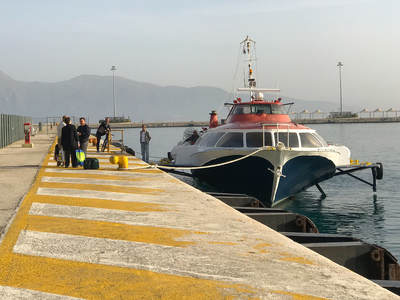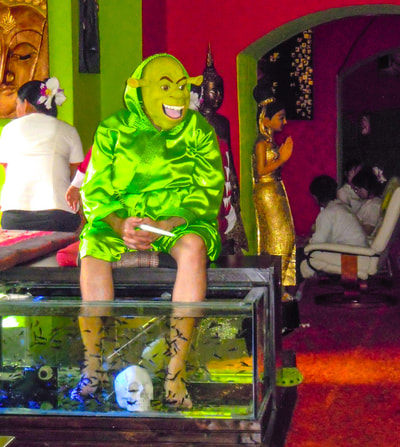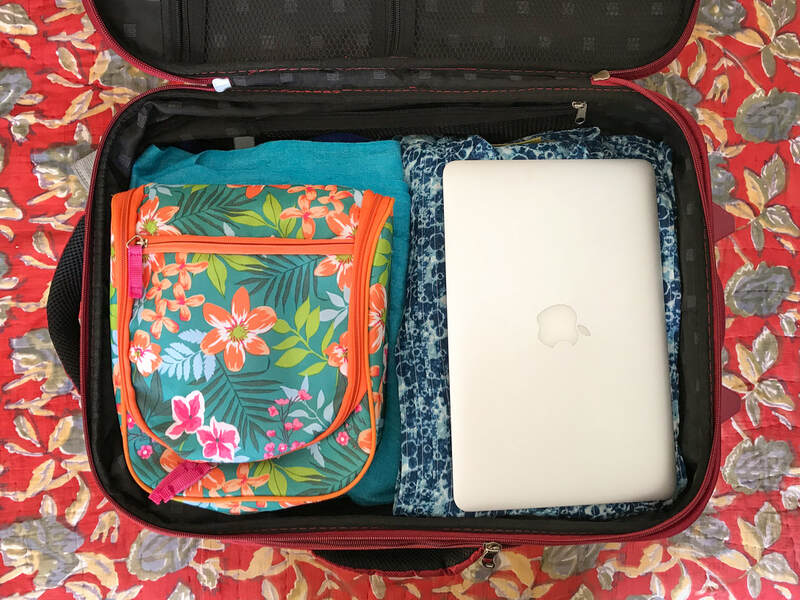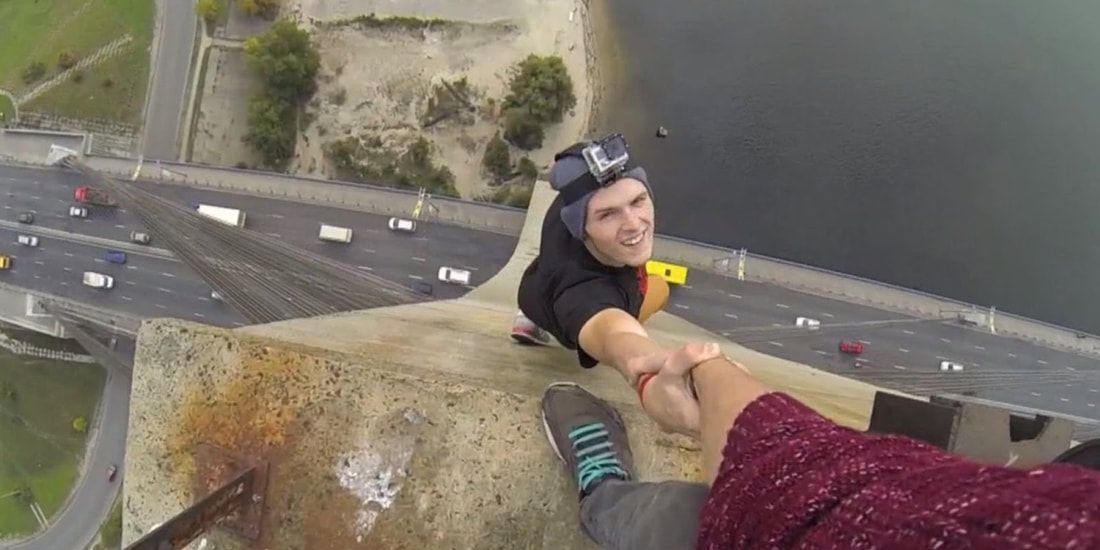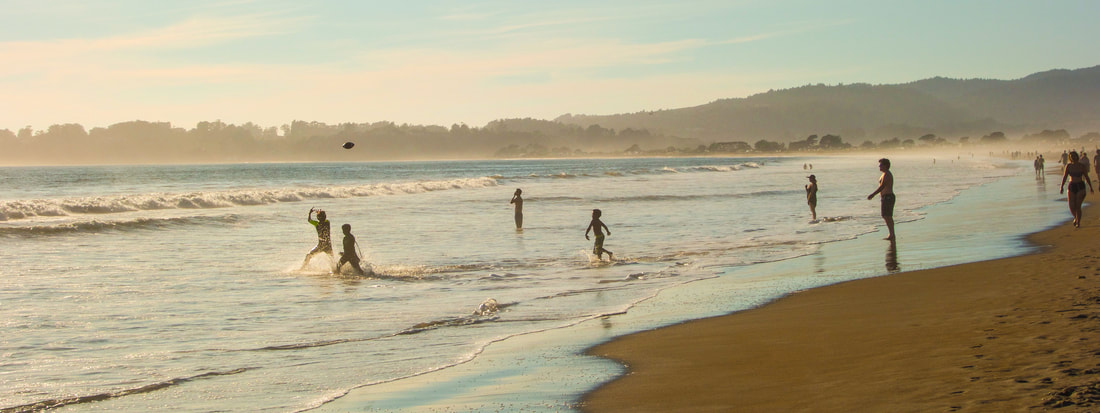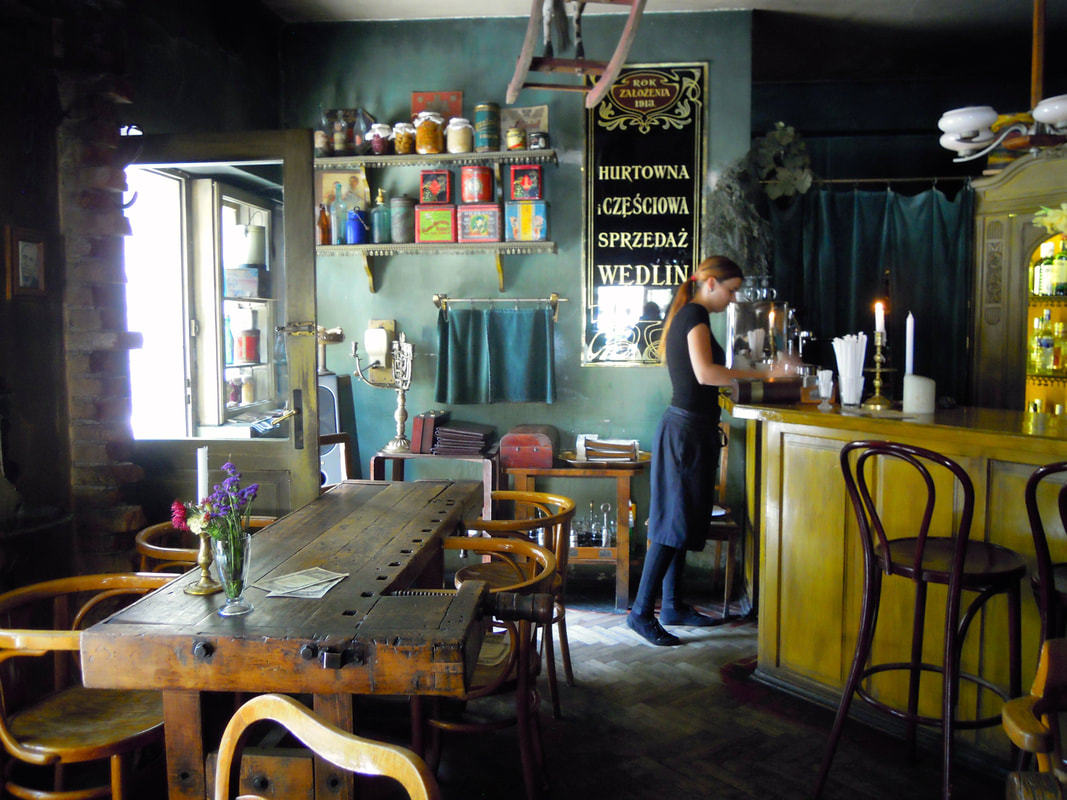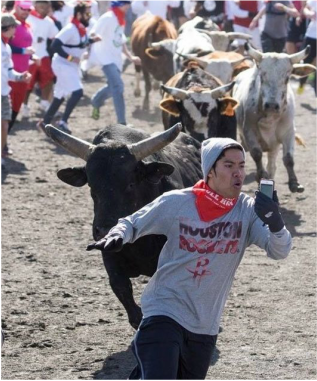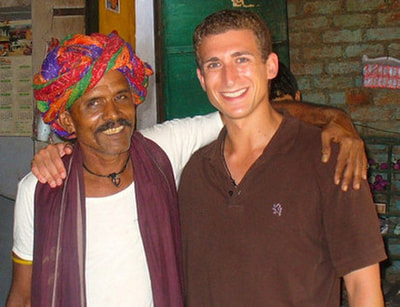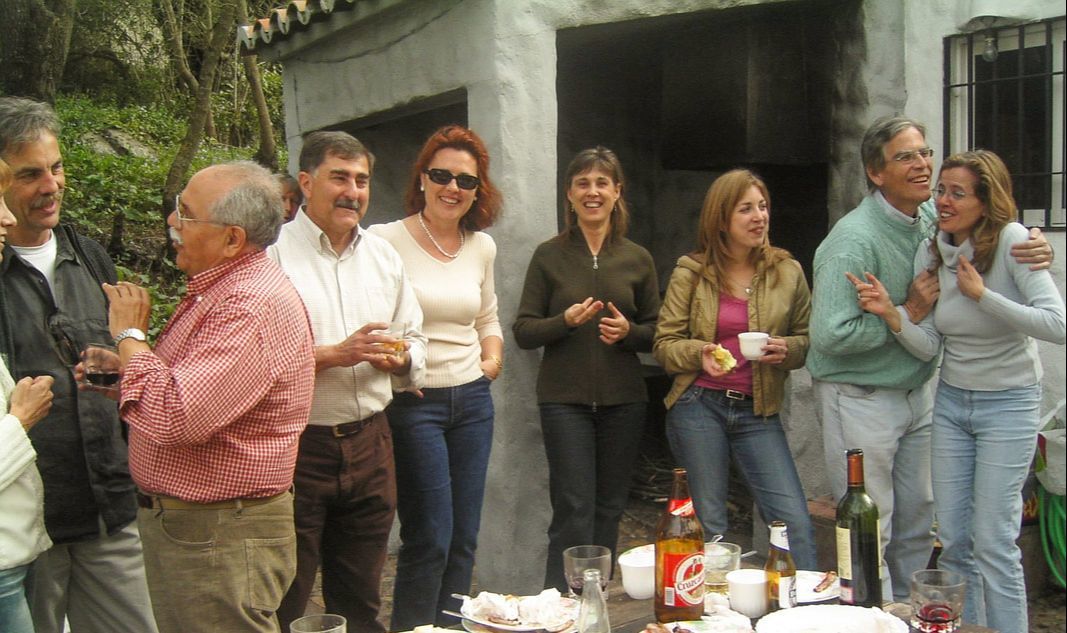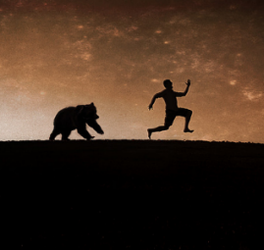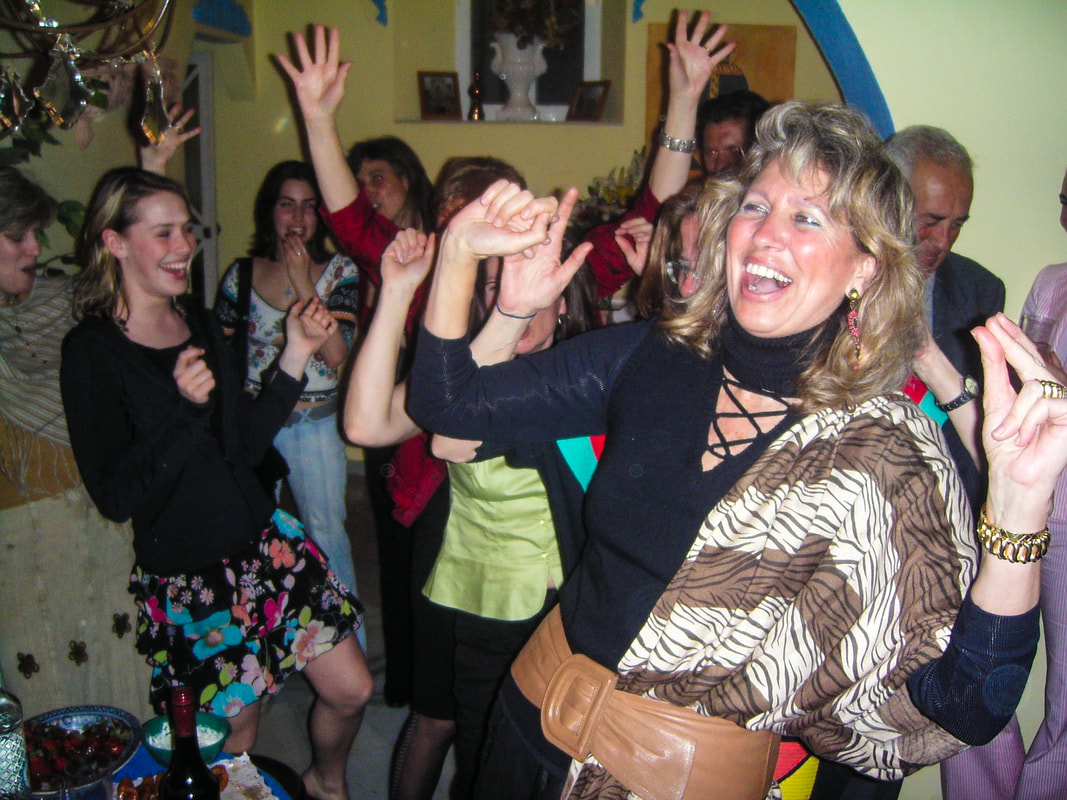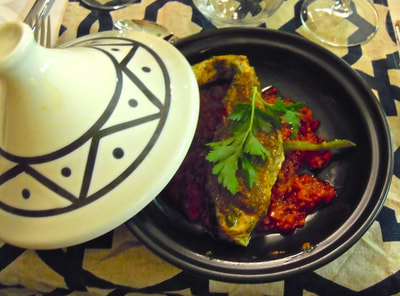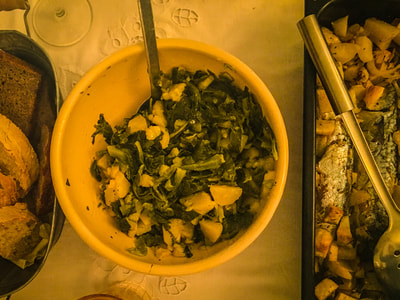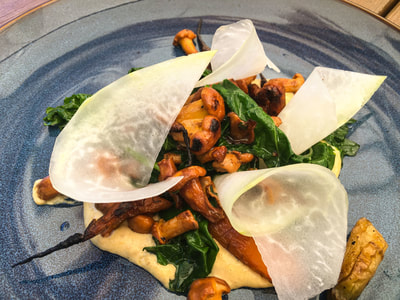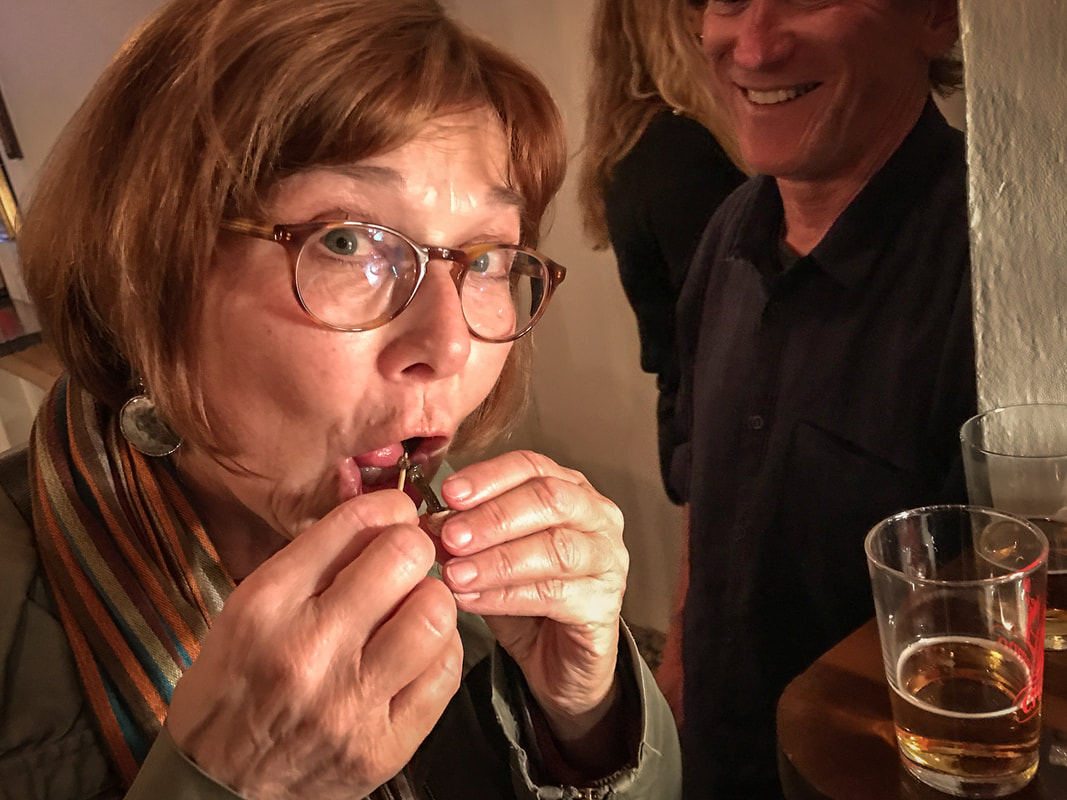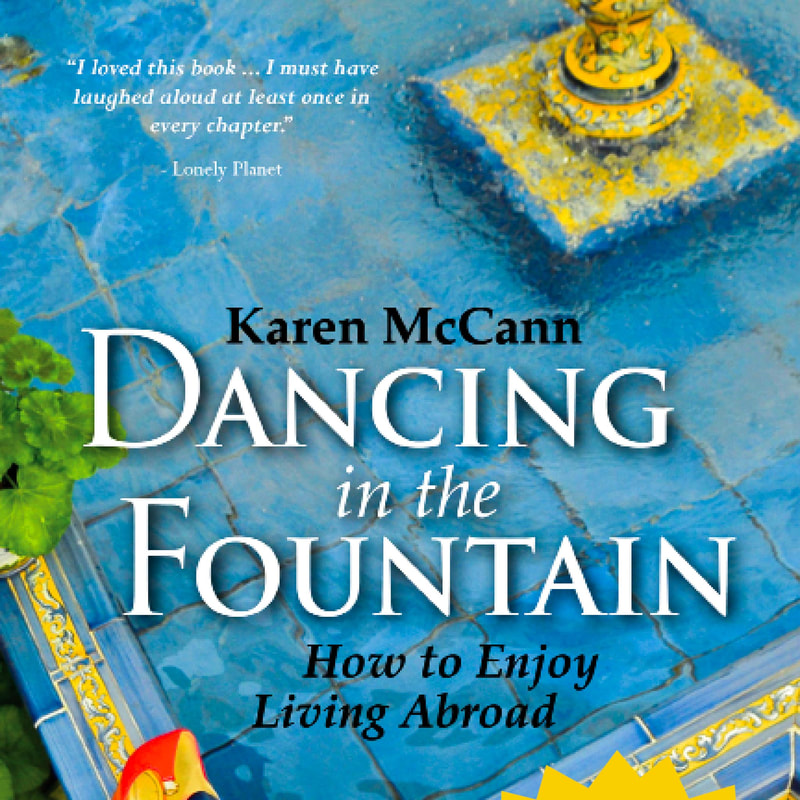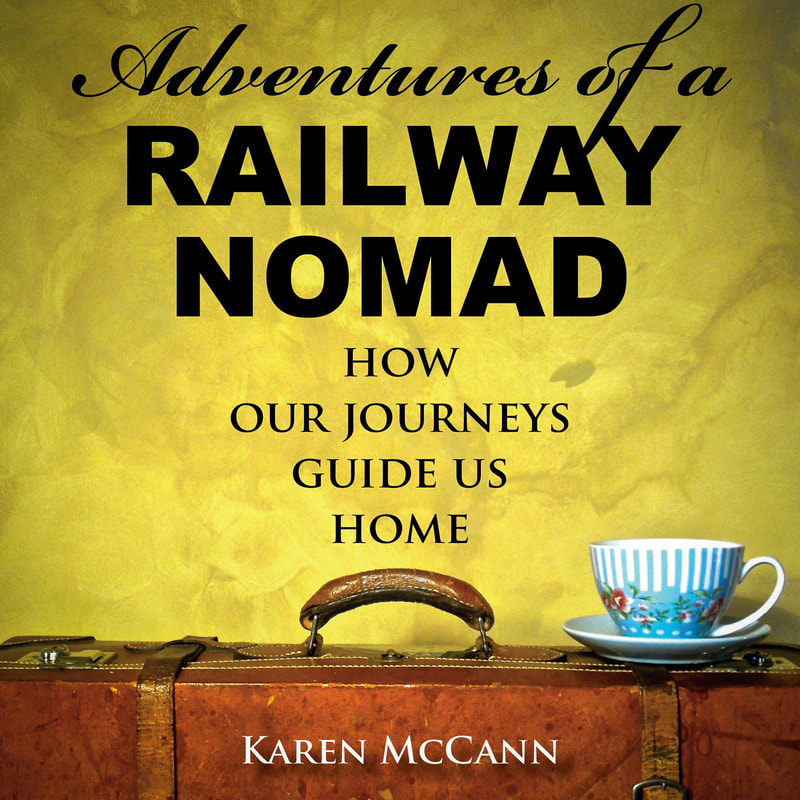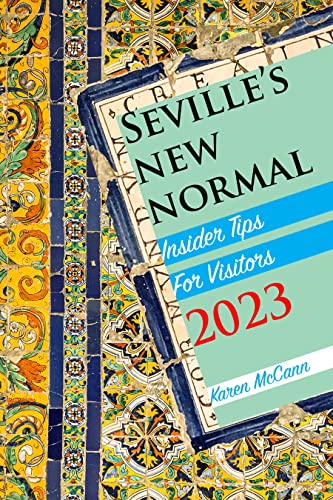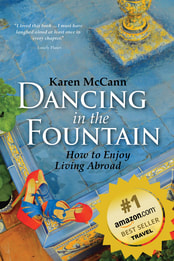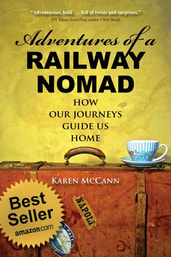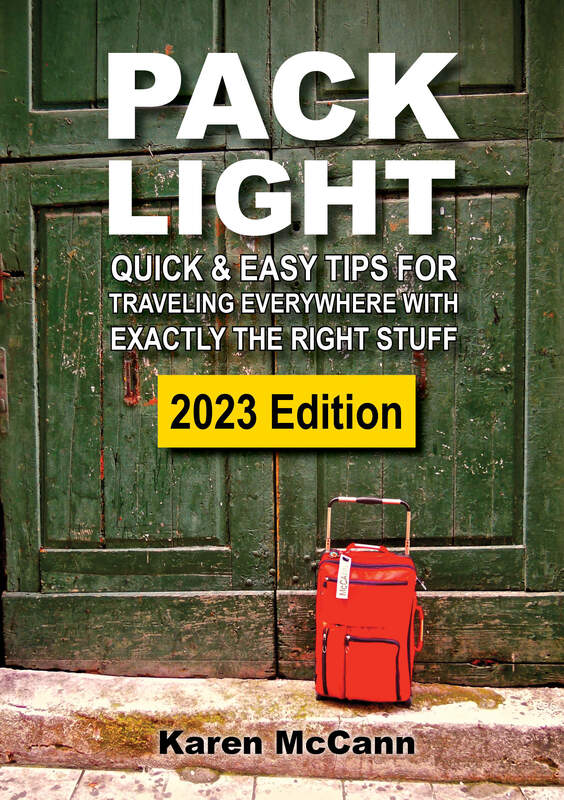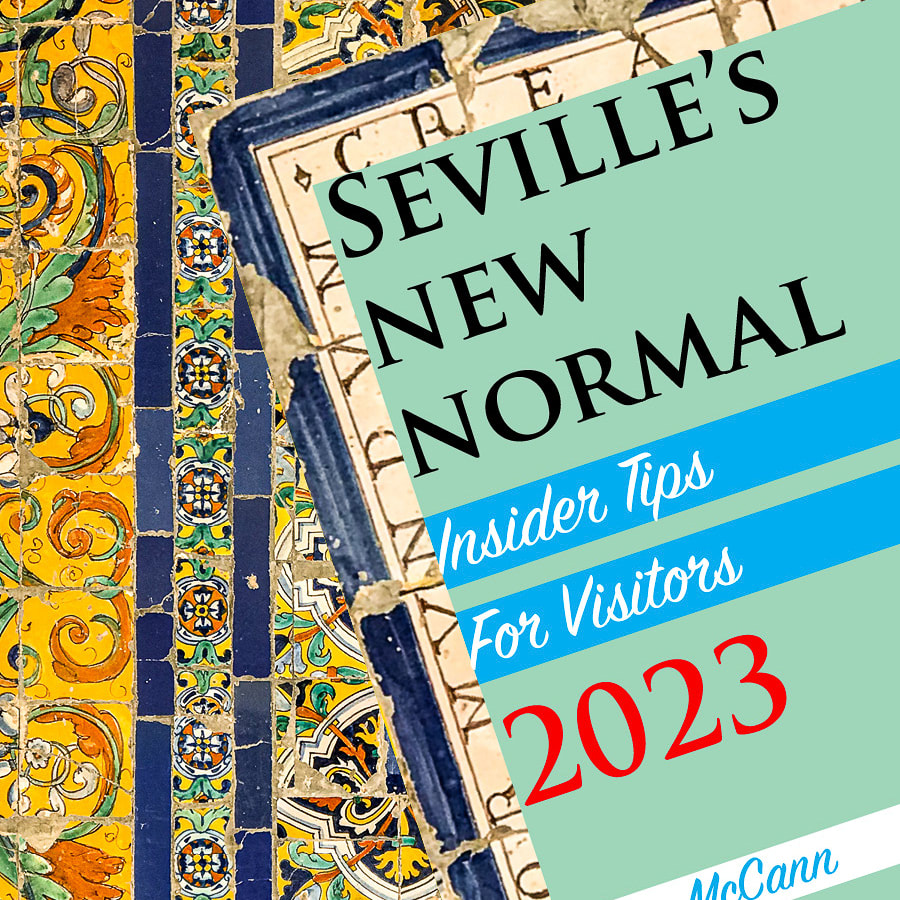|
Of all the stamps in my passport, the one that gives me most delight is the one for a country I’d never heard of till I got there, and that may or may not actually exist. Two years ago, Rich and I were wandering around Vilnius, Lithuania’s engaging capital, when we suddenly found ourselves at the border of another nation: the Republic of Užupio. Formed in the nineties by scofflaw bohemians in the wake of liberation from the Soviets, Užupio (also spelled Užupis) has no legal standing, but it does have its own flag, currency, constitution, president, anthem, patron saint (the ever-outrageous Frank Zappa), an army of 11 men (now retired), and a shopkeeper who, for a small fee, will stamp your passport. We were charmed by the sheer lunacy of it all. When I tell stories about stumbling upon offbeat places like this, people often ask, “How do you find this stuff?” Those who don’t know us well assume Rich and I spend months scrutinizing options, doing a cost-benefit analysis of the fun-to-expenditure ratio. Not so! In fact, over time our trips have become less researched, less structured, and to the greatest extent practical, less burdened with baggage. And they’re way more fun. Want to try it? Here are some tips to get you started. Travel with a purpose. Why go anywhere? For relaxation? A change of pace? Adventure? Answering these questions is the most vital — and the most commonly ignored — step in planning; skipping it can lead to ghastly misunderstandings and conflicts. For instance, are you looking forward to days of scuba diving and long nights at the casino, while your partner is dreaming of a second honeymoon? Before booking anything, see if you can identify activities you’d enjoy together. Long ago, Rich and I discovered we both get a kick out of funky dive bars, old-school diners, and weird roadside attractions; seeking them out has added zest to our wanderings for decades. Pack light. Easier said than done, I know. And for some journeys, such as weddings and business trips, you really do need a pretty substantial wardrobe. But if you’re traveling for fun, you can get by on less, without sacrificing comfort, hygiene, or a basic standard of style. Here’s how I reduced my travel attire to the bare necessities on a month-long trip through four countries. Don’t overplan. When we signed up for a tour of Cuba, we had no idea how packed our days would be. Attempts to dodge a few activities — the 8:00 AM talk on the history of music comes to mind — led to stern lectures about the fact we were there on an educational visa, so failure to show up for even a single activity would spark harsh, if unspecified, retribution from the Marxist-Leninist Socialist Republic of Cuba. Yikes! By the end of the trip, a simple walk through Havana felt like the Bataan death march. Never again. Now all our trips are entirely composed of free time, which we like to spend leisurely sipping espresso in a sidewalk café watching others gallop about in a sightseeing frenzy. Take detours. Free time lets you indulge in whims and go exploring. You might stumble into unknown countries like Užupio, or those once isolated behind the Iron Curtain, such as Albania. Last spring Rich and I went to the Greek island of Corfu in what we fondly believed was the offseason, only to discover it was crawling with tourists. Aghast, I opened my laptop to look for alternatives. That’s when I discovered a hydrofoil that would take us to Sarandë, Albania, conveniently located just 8.7 miles across the Ionian Sea. The Albanians seemed genuinely surprised and pleased to see us. They chatted with us, showed us the catch of the day, and gave Rich a spiffy haircut. We had a wonderful time. Faleminderit për kujtimet, Albania. (Thanks for the memories.) Recombobulate. Whenever we arrive in a new town, we immediately sit down and have a coffee. The ritual is, of course, less about coffee than about catching our breath, making sure we know where we’re going and how to get there, and — let me underscore this point — figuring out where there’s a cash machine so we can get enough local currency for our immediate needs. We once neglected this step while crossing from Romania into Bulgaria, where we were harassed so relentlessly by a black market cab driver that we fled the train station and hopped in the first legitimate taxi we saw. Halfway to our hotel we realized we were in the awkward position of having no Bulgarian lev to pay our fare. Our driver was kind enough to take Romanian leu, but we vowed never again to skip our recombobulation coffee. Respect others. The reason we travel is to experience people and places that aren’t like home, yet we sometimes struggle to appreciate the differences. “Just like Americans have the American Dream, others have their own dreams,” wrote Rick Steves. “Put yourself in the shoes (or sandals, or bare feet) of the people you meet. Find out why Basque people are so passionate about their language. Drink with Catholics in a Northern Ireland pub, discussing the notion of the tyranny of the majority. As you travel, learn to celebrate the local Nathan Hales and Ethan Allens, such as Turkey's Atatürk or El Salvador's Oscar Romero.” Return home changed. “Often I feel I go to some distant region of the world to be reminded of who I really am,” said Michael Crichton. “Stripped of your ordinary surroundings, your friends, your daily routines, your refrigerator full of your food, your closet full of your clothes, you are forced into direct experience ... That’s not always comfortable, but it is always invigorating.” So in the end, what adds joy to our journeys? I believe the Užupians expressed it best with the symbols on this sign posted at the border crossing: smile, proceed slowly, think artistically, and try not to fall into the river. Laimingas keliones (happy travels)! YOU MIGHT ALSO ENJOY
13 Comments
“I never travel without my diary,” Oscar Wilde once said. “One should always have something sensational to read in the train.” Today, he’d no doubt say, “I never travel without my phone. One should always have sensational images to scroll through on a plane.” Taking sensational travel photos has become an international obsession. Witness the number of selfie-related injuries and deaths, a phenomena that’s now so common it has spawned its own Wikipedia page and two nicknames: “killfie” and “selfiecide.” Fortunately most of us have learned that taking a powerful photo doesn’t require dancing with the grim reaper. Ever since I started this blog in 2011, I’ve been experimenting with (non-life-threatening) ways to improve my photography so that it adds punch to my stories. Just about the time I finally invested in a decent camera, I discovered my iPhone was giving me better shots, without all the fussing and fiddling. I gave away my “real” camera and now count on my phone to help me capture the sensation of joyful discovery I feel in the moment I first behold something truly wonderful. Often a great shot is sheer luck — or as Ansel Adams put it, “Sometimes I do get to places just when God’s ready to have somebody click the shutter.” Of course, you can't always count on luck, so next time you're ready to click the shutter, you might want to have a few tricks on your back pocket to boost your chances of doing justice to the scene. Trick #1: Take multiple shots of the subject. Sometimes even a slight change in angle or focus can suddenly make the image sing. I rarely take less than two shots of anything and often go for five or ten. (Rich says this has taught him more Zen-like patience than any meditation course.) Occasionally I realize I’ve arrived at that golden moment when God’s ready for a closeup; often, however, I don’t recognize my best shots I have until I scroll through them later. Which is why I advise taking lots. My iPhone’s camera has a burst mode, which lets you take multiple shots in quick succession just by holding down the shutter release button or the volume-up button. (Here’s how to do bursts on an Android.) To be honest, in the heat of the moment I usually forget it’s there, but it can be terrific for capturing action shots. Trick #2: Shift your perspective. It’s natural to shoot from eye height, but sometimes you get a more intriguing view by positioning the camera higher or lower, or finding a scene with unusual angles or depth. When possible, avoid sticking the main subject squarely in the middle against a flat background; that feels more static, like a police mug shot. Try stepping to one side, going down on one knee, or climbing up to a higher viewpoint. Trick #3: Blur the background. This places everyone’s attention on the main event when it might otherwise be deflected to random passersby, hideously inappropriate graffiti, or other background clutter. Even if the background’s fine, as in the bookstore below, blurring lends a certain dreamy romance to the mood. In the photo of the fans, the distant, hazy image of Plaza de España gives context, underscoring the exotic location. To get this effect, I use my iPhone’s portrait mode; the same effect is possible for Android users with a little finagling. Trick #4: Arrange food shots like still life paintings. We often grab snapshots of interesting meals, but they tell more of a story if you pull in other stuff that’s on the table: a napkin, crusty bread, a dish of olives, wine glasses, the map of Paris. You’ll also want to remove any unsightly distractions such as dirty plates from the previous course. Apologize in advance to your dinner companions and insist they begin eating while their food is hot. Trick #5: Work with uneven light. Bright, even light can make photos look flat and boring; this is why I avoid using my flash. You’ll get lots more drama when you happen to be somewhere with slanted light — for instance, from windows, lamps, or the sun at the beginning or end of the day. If you’re struggling with really low lighting conditions, borrow a friend’s cell phone, switch on the flashlight function, and hold it above and to one side so that you create your own slanted light. Nowadays, whenever I stumble across a place with gorgeous natural illumination — like this Krakow café — I immediately reach for my phone. Every picture tells a story, even if it’s something as simple as “We loved this spaghetti” or “I can’t believe I’m here!” or “Is it me or is that really weird?” If you’re having fun taking a photo, chances are some of your enjoyment will carry over into the image, and it will delight your family, friends, and random strangers on social media. “There are no rules for good photographs,” said Ansel Adams. “There are only good photographs.” OK, maybe he's right and there are no rules, but I can suggest one life-saving guideline: no matter how much you want the shot, promise me you won’t ever do this. Got any hot tips or questions about travel photography? Let me know in the comments below! YOU MIGHT ALSO ENJOY One of the most ghastly surprises of my expat life occurred during a convivial country barbeque shortly after we’d moved to Seville. Without warning, a Spanish friend called for attention and announced, “Now our American friends, Karen and Rich, will sing.” This was horrifying on so many levels. I’m the least musical person on the planet, and (I say this lovingly) Rich is even worse. For a second I expected to look down, notice I was naked, and think, “Thank God, it’s only a nightmare.” When that didn’t pan out, I briefly considered hitching a ride to the airport and repatriating to America. But in the end Rich and I managed a hideously off-key rendering of “For He’s a Jolly Good Fellow,” and everyone gave us pity applause and told us to keep our day jobs. Incredibly, these same friends (clearly gluttons for punishment) continued to ask us to sing at other parties. It turns out that in Seville, as in many traditional societies, every guest is expected to contribute something to the evening’s entertainment. You are literally meant to sing for your supper — or tell a story, make a joke, juggle, or provide some other form of amusement. Luckily, it doesn’t have to be great, it just has to keep the evening rolling along. Nowadays, meal-sharing apps and websites offer unprecedented opportunities to dine with locals in their homes. On such occasions, bear in mind that your social obligations don’t end with providing a valid credit card number. Don’t worry, you’re not required to juggle the dinner rolls or tap dance with a glass of water on your head (although if you do, I hope I’m there to see it). Most hosts have more modest expectations: that you’ll arrive with good manners, a friendly attitude, and a few entertaining ideas. Tell a Joke Are you good at telling jokes? I’m hopeless. I love storytelling and tossing out wisecracks but have a hard time remembering the kind of elaborate knee-slappers that start “these three nuns walk into a bar.” If you do tell jokes, consider your audience’s sensibilities and grasp of English. You’ll probably want to skip that hilariously raunchy political zinger you heard on Last Week Tonight and go with a more general crowd-pleaser like this classic. Ask a Question As you may have observed, if you get people talking about themselves, they’ll often emerge from the conversation thinking that you are a brilliant dinner companion. You might start by saying something nice about their city (“They’ve done a lovely job patching up the bullet holes in the main square!”) and asking if the region has changed much in recent years. If it feels comfortable to shift to more personal topics, try out some of “The 36 Questions That Lead to Love” used in a scientific study on establishing intimacy.
Listen to the answers, ask follow-up questions, and pour more wine, because the conversation is going to get interesting. You never know what you’re going to learn about your dinner companions. Rich and I once signed up online for a Palestinian meal served in a private apartment in Barcelona. We arrived to find the other guests were Germans visiting a relative who now lived in Barcelona with his Spanish wife. As dessert came around, one brother said, “Before we conclude the meal, why don’t we each tell a story?” He led with a humorous account of meeting his wife, another spoke of his travels, and then it was the 93-year-old grandmother’s turn. She told a sweet tale of falling in love with her late husband when he was a young man in the service. “We were separated for many years, but we wrote each other and never lost hope…” I did the math realized with a start that her beau had been a soldier in Germany’s Wehrmacht during WWII. Now that was a granny with some serious backstory. Sometimes our entertainments take us into deeper waters than we were expecting. And that’s part of the adventure of connecting with people from other countries. Reaching across the cultural divide opens the door to vivid new experiences, and sometimes the ones we find most challenging turn out to be the most gratifying. Many years after the barbecue incident, that same group of friends took us to visit a nursing home in a Spanish village, and when we got to the main lounge, they announced to the assembled residents and staff, “Now our American friends will sing.” As usual, this came with no advance warning, but by then Rich and I were always ready. Knowing that call-and-response songs work best, we taught everyone the fa-la-la-la chorus and launched into “Deck the Halls.” In no time, everyone was clapping and singing; a few even let go of their walkers to dance. No one cared that we couldn’t carry a tune or that they were singing a Christmas carol on a sweltering afternoon in August. Within minutes, the pleasure of raising our voices together transformed us from strangers into a circle of kindred spirits. And isn’t that the whole point of connecting with locals when you’re abroad? YOU MIGHT ALSO ENJOY Nearly all my American friends and relatives think I’m bonkers to live abroad. “But you’re from California,” they point out in bewilderment. “That’s where people move to. Why live anywhere else?” No doubt some suspect that I’m hiding out in foreign parts because I’m secretly up to something, like the expat writers in William S. Burroughs famous quote: “They lived in the native quarter of Tangier smoking hashish and languidly caressing a pet gazelle.” (For the record, I do not own a pet gazelle.) Most of us move abroad for much the same reason we went away to college — not because we love our parents, our country, or our upbringing any less, but because they have prepared us to go out and embrace a bigger, brighter future. I often say that moving abroad is the greatest opportunity to reinvent yourself outside of the witness protection program. But to be more accurate, you’re not so much reinventing yourself as removing the external props that keep you confined within a particular cultural identity, so that now you can find out who you really are. People considering a move abroad often send me emails asking if it’s worth it. The short answer? Yes. At least, it is for me. The long answer? Yes, because you learn and do amazing things. Like what? Get comfortable with being outside your comfort zone. Worried about being in a rut? You can kiss that problem goodbye. As Bill Bryson put it, "Suddenly you are five years old again. You can't read anything, you have only the most rudimentary sense of how things work, you can't even reliably cross a street without endangering your life. Your whole existence becomes a series of interesting guesses." Don't take yourself too seriously. Sometimes those interesting guesses lead to linguistic and cultural pratfalls. For instance, you might innocently ask the man at the farmers' market if he has huevos (literally eggs but slang for testicles) causing other shoppers to roar with laughter as he responds with a pithy zinger you can’t fathom and probably don’t want to. Make do with less. In the early years, our shopping efforts often floundered to a halt in a welter of confusion and embarrassment, forcing us to flee the scene without the eggs, screwdriver, or other planned purchases. Eventually we managed to outfit our entire apartment, but as we originally intended to stay just a single year, we did it simply and cheaply. Nearly fourteen years later, minimizing possessions has become a way of life. On the road, I can easily live out of a single small suitcase for months and occasionally enjoy traveling without any luggage whatsoever. Be patient. Eventually, you really will learn to accept with equanimity waiting in line for hours at the Foreigners’ Office, only to be told that your residency card application is delayed because you didn’t provide the document that this very same clerk refused to take from you three weeks ago when you presented it. Talk with anybody about anything. One of the true joys of expat life is meeting extraordinary people from around the world (often while waiting in line at the Foreigners’ Office). I’ve learned if I ask the right questions (and stop talking about myself) most people have incredibly interesting stories to tell. Appreciate America. Nothing gives you fresh perspective on your own country like living outside of it and learning how it appears to others. I don’t always find it easy to explain things like the 13th Amendment, the electoral college, or gerrymandering, but these conversations give me a lot to think about. And it’s encouraging to hear a Spanish friend say, as one did a few years ago, “Your country’s founders got it right. Democracy is always a messy business, but your constitution is an incredible document. You’re lucky to have it.” I agree. Living in post-dictatorship Spain, traveling to countries occupied for decades by the Soviets, I have grown more passionate about democracy. That’s why I helped start a group here in Seville that provides American expats with information about issues, candidates, and how to vote from abroad. And why this summer, Rich and I decided to put off a long-planned, many-month train trip around the Mediterranean rim to work on voter registration in the US during the run-up to the midterm elections. Last month in California, Rich and I signed up to do voter registration following the ceremony in which 800 immigrants from 84 countries were sworn in as American citizens. We arrived early, snuck into the back of the room, and listened to the crowd explode with cheers as their citizenship became official. Many were moved to tears, and I have to admit, I was too. Just like my own ancestors, they’d worked hard, gotten lucky, and found their place in the (admittedly somewhat dysfunctional) American family. I was thrilled for them and spent a good part of the morning congratulating and hugging the people I registered. One man told me he’d been working toward this day for 24 years. Some people will always question the wisdom and sanity of my move abroad, but I believe it’s made me a better person, a more thoughtful citizen of the US, and an unofficial ambassador for my country. “I’ve never really talked to an American before,” one Spanish friend told me. “You’re not what I expected.” Since many Europeans base their views of the USA on The Simpsons, I wondered if she’d feel more at ease with me if I dyed my hair blue. Or got a pet gazelle. And it’s moments like this, when I see myself through the lens of another’s cultural perspective, that I realize how truly fortunate I am to live in a larger world. YOU MIGHT ALSO ENJOY
|
This blog is a promotion-free zone.
As my regular readers know, I never get free or discounted goods or services for mentioning anything on this blog (or anywhere else). I only write about things I find interesting and/or useful. I'm an American travel writer living in California and Seville, Spain. I travel the world seeking eccentric people, quirky places, and outrageously delicious food so I can have the fun of writing about them here.
My current project is OUT TO LUNCH IN SAN FRANCISCO. Don't miss out! SIGN UP HERE to be notified when I publish new posts. Planning a trip?
Use the search box below to find out about other places I've written about. Winner of the 2023 Firebird Book Award for Travel
#1 Amazon Bestseller in Tourist Destinations, Travel Tips, Gastronomy Essays, and Senior Travel
BLOG ARCHIVES
July 2024
CATEGORIES
All
|
